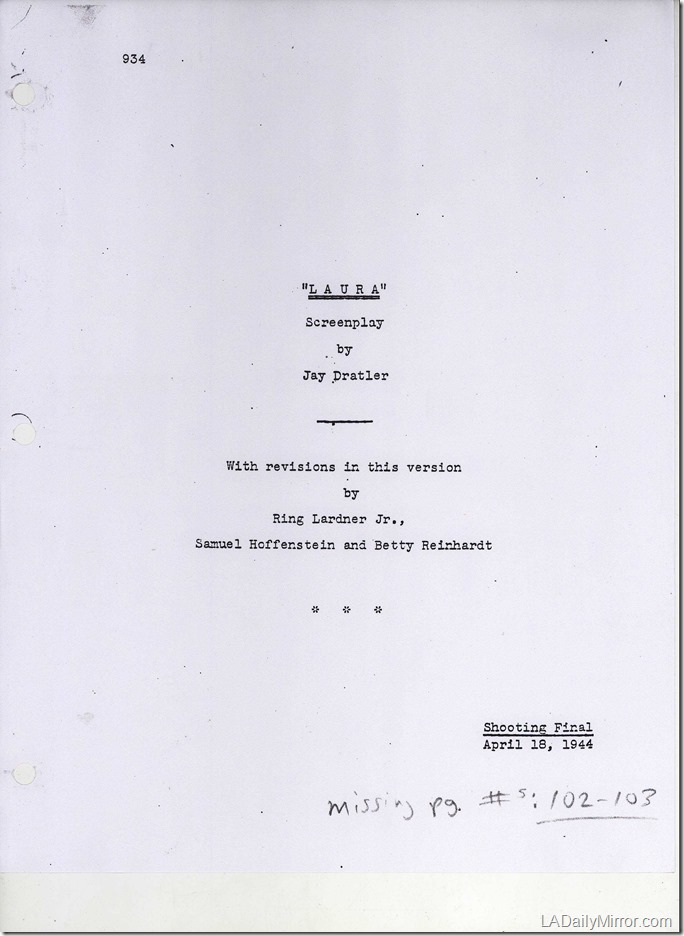
The final shooting script for “Laura,” dated April 18, 1944, with additions as late as July 1944.
On Monday, Nov. 1, 1943, Twentieth Century-Fox head of production Darryl F. Zanuck issued his stinging critique of Jay Dratler’s draft of “Laura.” A week later, Daily Variety reported that Ring Lardner Jr. had been hired to revise the script, although it erred in saying that the movie was in production at Warner Bros.
In “Behind the Scenes,” Rudy Behlmer (Page 183) says that Lardner had been working on the aborted Fox project “Ambassador Dodd’s Diary” and when the film was abandoned, moved to “Laura.”
The trade papers that are indexed on Media Lantern reveal no connection between Lardner and “Ambassador Dodd’s Diary,” which was retitled “Now It Can Be Told,” according to the Oct. 1, 1943, Film Daily. (It’s unclear if this film is related in any way to the 1945 Fox film “Now It Can Be Told,” finally issued as “The House on 92nd Street” by Barre Lyndon, Charles Booth and John Monks Jr.)
However, in “Backstory 3: Interviews With Screenwriters of the 1960s,” Lardner says that “While I was working on the Nazi script, for example, it was ‘Laura’ for which I rewrote all the Clifton Webb dialogue and contributed to a few other scenes. Jay Dratler wrote me a note of gratitude for not challenging his sole screenplay credit.”
Spoilers ahead.
In fact, Showmen’s Trade Review reported April 3, 1943, that “Ambassador Dodd” had “been assigned to Otto Preminger for production with Martha Dodd (Ambassador Dodd’s daughter) collaborating on the screenplay with Fay Kanin.” Although no screenwriter is listed, Motion Picture Daily reported July 8, 1943, that “Ambassador Dodd” was to be directed by Archie Mayo with Anne Baxter and Harry Carey.
In any event, Lardner, who had received an Academy Award for “Woman of the Year” in March 1943, spent about three weeks revising “Laura” and submitted a script dated Nov. 29, 1943. The results were unsatisfactory, however, and the team of Samuel Hoffenstein and Elizabeth “Betty” Neely Reinhardt was brought in to work on further revisions.
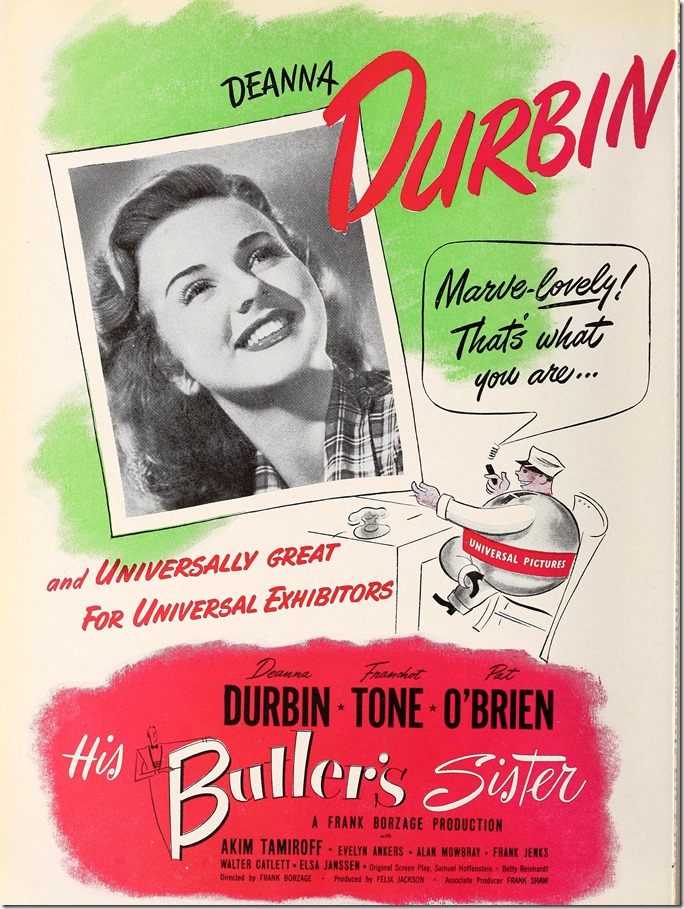
“His Butler’s Sister,” 1943, the first collaboration of Samuel Hoffenstein and Betty Reinhardt, in Film Daily.
In discussions of “Laura,” Hoffenstein and Reinhardt rarely get much attention, but it’s worth taking a further look at who they were. They spent about five months on the script — from November 1943 to April 1944 — longer than any of the other writers.
Most important, the revised script credits them for the ending in which Waldo Lydecker (Clifton Webb) is arrested after a struggle, as in Vera Caspary’s novel, rather than killed, a finale that was discarded in favor of the one by Jerome “Jerry” Cady that was ultimately used in the film.
At the time he and Reinhardt began revisions on “Laura,” Hoffenstein was a well-known, seasoned film writer who worked for the New York Sun for 20 years and had film credits that included “An American Tragedy” and “Dr. Jekyll and Mr. Hyde,” and in the 1930s he had worked with “Laura” director Rouben Mamoulian at Paramount on “Dr. Jekyll,” “Love Me Tonight” and “The Song of Songs.”
He also wrote several books of poems: “Life Sings a Song” (1916), “Poems in Praise of Practically Nothing” (1928), “Year In, You’re Out,” (1930), and “Pencil in the Air,” published in 1947 after Hoffenstein died of a heart attack at the age of 56. He also contributed to “Broadway Anthology” (1917).
On May 3, 1931, Hoffenstein was profiled by Los Angeles Times by columnist Lee Shippey:
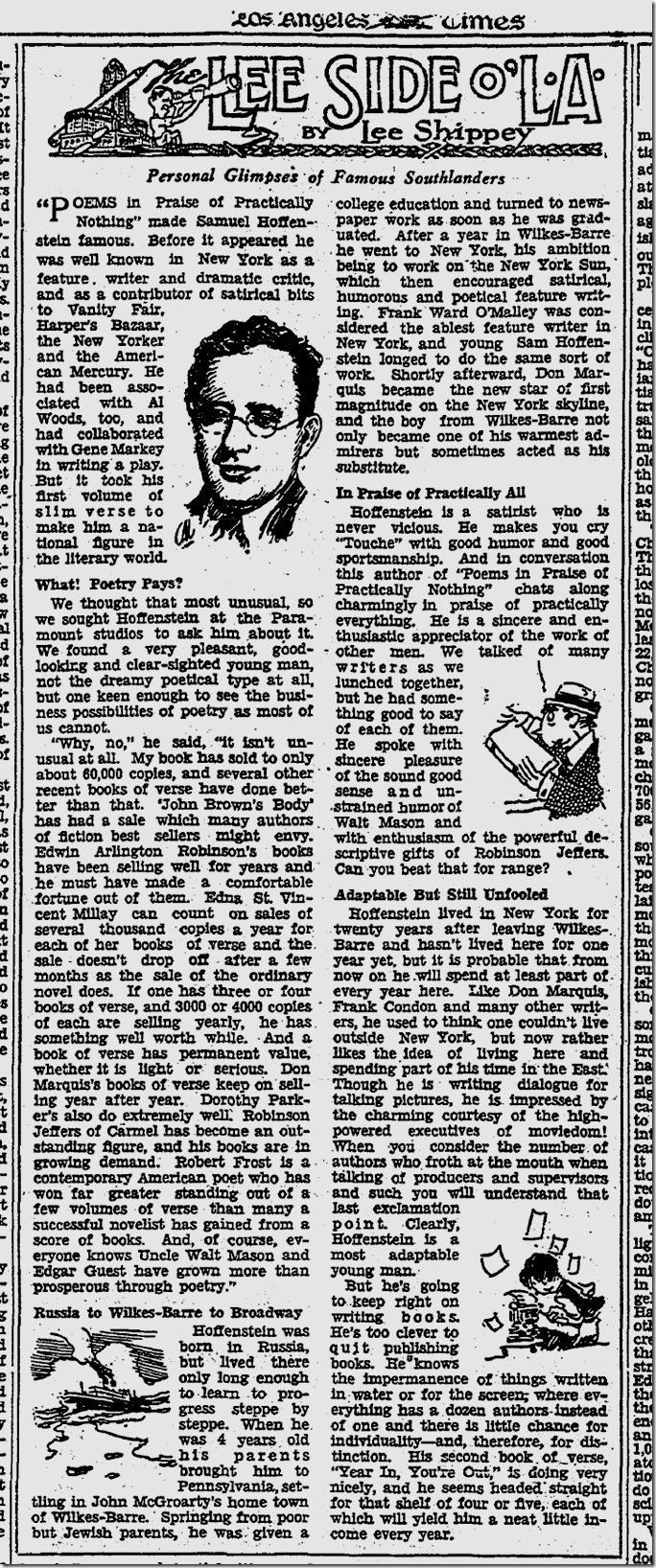
In 1935, Hoffenstein was being paid $75,250 a year ($1.2 million in 2014 dollars) at Paramount, compared to Mamoulian ($86,666), W.C. Fields ($76,875), Cecil B. DeMille ($72,000) and Busby Berkeley at Warner Bros. ($69,750), according to the Motion Picture Herald. In 1937 at MGM, he was paid $64,625, according to Motion Picture Herald.
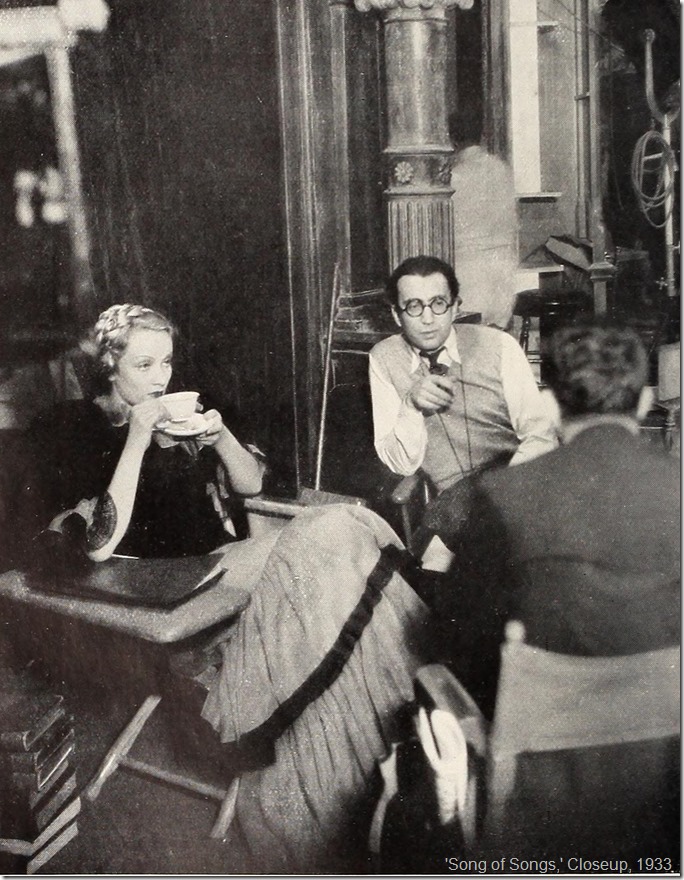
Marlene Dietrich listens as Rouben Mamoulian discusses “Song of Songs” with writer Samuel Hoffenstein, Closeup, 1933.
In contrast, at the time she partnered with Hoffenstein on the 1943 Universal picture “His Butler’s Sister,” Elizabeth “Betty” Neely Reinhardt hadn’t written much more than a couple of Maisie pictures at MGM for Ann Sothern. A board member of the Screen Writers Guild in the 1940s, Reinhardt died in 1954 at the age of 44, with Daily Variety noting that she died after a long illness.

Betty Neely Reinhardt attended DePauw University, Class of 1930, and her earliest films were Spanish-language movies at Warner Bros. and Fox, where she might have met her husband, director John Reinhardt, an engineer and actor who directed Spanish-language films at Fox.
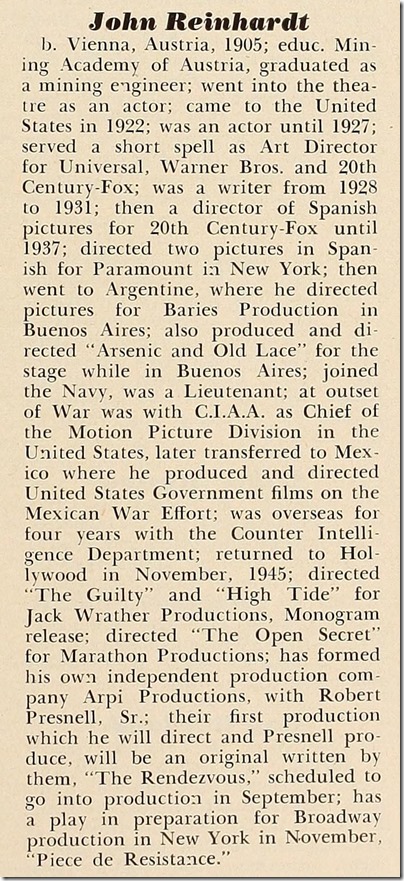
John Reinhardt in Film Daily, Sept. 10, 1947.
It’s unclear how Hoffenstein and Reinhardt met, but their first collaboration was apparently the Deanna Durbin-Franchot Tone film “His Butler’s Sister” at Universal. Virtually forgotten and the drawing mediocre reviews today, “His Butler’s Sister” was praised in Showmen’s Trade Review on Nov. 13, 1943, as “Fun and entertainment for the family with laughs to spare and singing to delight the ear. Should hit the jackpot in any situation.”
Motion Picture Daily said (Nov. 9, 1943), the film “is 13th in the series of Deanna Durbin vehicles and is a worthy box office followup of “Hers to Hold,” in which the star’s following will find pat an attraction keynoted in a foreword describing it as “A Fable of the Day Before Yesterday”…. Samuel Hoffenstein and Betty Reinhardt scooped deeply into the tradition of Cinderella and came up with that basic yarn about the country girl with a voice and theatre ambitions, her adventures in the big city and how she found love and success.”
After “Laura,” Hoffenstein and Reinhardt collaborated on “Sentimental Journey,” “Cluny Brown,” “Carnival in Costa Rica” and “Give My Regards to Broadway,” Hoffenstein’s last film, all at Fox.
To be continued.

